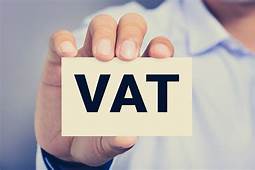Should you leave the Flat Rate Scheme?
- May 16, 2018
- Posted by: admin
- Category: Contractors, Start-ups, Tax

Should you leave the Flat Rate Scheme?
This is a question we get asked quite often these days.
For those just starting out in business, let’s have a quick recap of VAT registration requirements.
In most cases (and we won’t go into the exceptions here), if your sales to UK customers exceed £85,000 per annum (the VAT registration threshold for 2018), you must register for VAT. You can register voluntarily if your sales are lower than this.
Once registered, you must charge your UK customers 20% VAT on top of your normal selling price.
This VAT is collected on behalf of HMRC and has to be reported and paid over to them on a VAT return.
Most VAT that you pay out on your business expenses can also be reported on your VAT return and is then deducted from the amount you pay to HMRC.
They will even refund VAT to you if you pay out more than you get in.
HMRC introduced the Flat Rate Scheme (FRS) for VAT in 2002. The object was to help small businesses by simplifying the process of accounting for VAT.
Basically, any business with a turnover below a certain level (currently £150,000) could join the scheme and, once in, could remain there provided its turnover didn’t go above the upper level (currently £230,000).
HMRC looked at each trade sector and estimated the average level of purchases a business in that sector would make in relation to sales. It then set a “Flat Rate Percentage” for the business sector.
The trader still charged his customers 20%, but when it came to preparing his VAT return, he simply had to multiply his gross sales receipts (including the 20% VAT) by his “Flat Rate Percentage” and report and pay over that amount of VAT to HMRC.
He no longer had to separate out and keep track of the VAT he incurred when making purchases for his business. The Flat rate for IT freelancers (computer and IT consultancy) is currently set @ 14.5%.
The scheme has proved very popular because many small businesses, including IT freelancers, have very few expenses, and have been making quite substantial savings by being on the Flat Rate Scheme.
Many businesses below the VAT registration have been encouraged to register for VAT voluntarily in order to take advantage of the “Flat Rate Savings” offered by HMRC.
This may have been HMRC’s intention all along but, as we know, all good things must come to an end.
VAT Flat Rate Scheme changes from 1 April 2017
With effect from 1 April 2017, HMRC introduced the notion of a “limited cost trader” and increased the Flat Rate for this category to 16.5%.
A business is a limited cost trader if its VAT inclusive expenditure on relevant goods is either:
- less than 2% of the VAT flat rate turnover
- greater than 2% of the VAT flat rate turnover but less than £1000 per year
One thing to be really careful of is that you have to check each VAT return to see if you are categorised as a limited cost trader or not – you could be a limited cost trader for one VAT period, and then back to your usual flat rate category for another.
HMRC have an online tool that you can use to check your status for each VAT return, see below for link:
https://www.tax.service.gov.uk/check-your-vat-flat-rate/vat-return-period
With regards to what counts as relevant goods you can read HMRC’s guidance, section 4.6, HERE
Broadly, relevant goods excludes services, equipment purchases (unless for resale to customers as a normal part of the trade carried on) and food and drink.
The typical IT freelancer will be classed as a “limited cost trader” and so their Flat Rate Percentage has increased to 16.5%.
For more information on these flat rate scheme changes read our detailed article here.
Let’s look at your particular situation.
Just in case your £3,000 per year business costs are for relevant goods (which is unlikely), we’ll still include an example using the normal Flat Rate of 14.5%.
We’ll then compare this to the situation for a “limited cost trader” and also show what the situation would be if you were not on the Flat Rate Scheme. These examples include the effect of corporation tax (CT) because:
- Any Flat Rate Saving is added to your profit, and
- Because, if you’re recovering the VAT you pay out on expenses, the amount of expenses you set against your income excludes the VAT.
(These examples ignore non-vatable costs such as salaries, which do not impact the analysis)

So, in answer to your question, if you’re a limited cost trader, which the vast majority of freelancers and contractors will be, you would be better off by £308, if you left the flat rate scheme.
However you need to consider the savings alongside the simplification and reduced administration that the flat rate scheme offers and consider which is best for you.
Before you send your letter to HMRC requesting that you leave the scheme, a few cautionary notes:
- If you leave the Flat Rate Scheme, you can’t re-join for 12 months.
- To re-join, your turnover must be below £150,000, not the upper level of £230,000.
- Your VAT returns will require more time and effort to prepare so, if you use a bookkeeper or accountant, check if they’ll be increasing the amount they charge you.
- Think about whether your current pattern of business costs will continue.
Source: JF Financial
